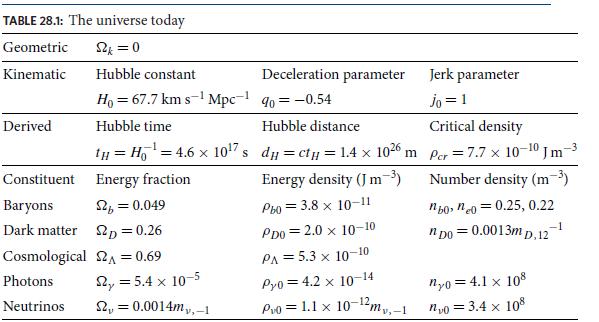Assume that a fraction 0.2 of the baryons in the universe is associated with galaxies, split roughly
Question:
Assume that a fraction ∼0.2 of the baryons in the universe is associated with galaxies, split roughly equally between stars and gas. Also assume that a fraction ∼10−3 of the baryons in each galaxy is associated with a massive black hole and that most of the radiation from stars and black holes was radiated when a ∼0.3.
(a) The current energy density in light from all the galaxies is ∼4×10−16 Jm−3. Estimate what fraction of stellar hydrogen has been converted by nuclear reactions into helium.
(b) The current energy density of light radiated by observed accreting black holes— dominated by quasars—is ∼6 × 10−17 Jm−3. Estimate the actual efficiency with which the rest mass energy of the accreting gas is released.
(c) Estimate the total entropy per baryon associated with the horizons of massive black holes today and compare with the entropy per baryon associated with the microwave background and the intergalactic medium.
Table 28.1.

Step by Step Answer:

Modern Classical Physics Optics Fluids Plasmas Elasticity Relativity And Statistical Physics
ISBN: 9780691159027
1st Edition
Authors: Kip S. Thorne, Roger D. Blandford





